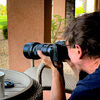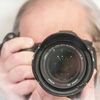When is Automatic Mode better that Manual Mode
Apr 7, 2021 12:35:33 #
Apr 7, 2021 12:45:48 #
anotherview wrote:
These settings work well in daylight: "set s... (show quote)
Is there a general rule regarding shutter speed if the lens or body has VR/IS?
-----
Apr 7, 2021 12:59:17 #
I have personally benefited from this discussion. I had been frustrated with my 80-400mm lens focus issues and had victory yesterday as can be seen in my Photo Gallery post yesterday.
1/2000, f/5.6, Auto ISO, back button focus in Servo focus mode (Canon) in case the birds moved. I adjusted the speed and aperture to fine tune the resulting ISO, mostly keeping high speed to freeze camera shake on long lens.
Thanks, everyone!
1/2000, f/5.6, Auto ISO, back button focus in Servo focus mode (Canon) in case the birds moved. I adjusted the speed and aperture to fine tune the resulting ISO, mostly keeping high speed to freeze camera shake on long lens.
Thanks, everyone!
Apr 7, 2021 18:59:53 #
Apr 8, 2021 08:12:13 #
I had not been using auto landscape mode and was having trouble with dof on manual. I just experimented with auto landscape mode and it made all the difference, extremely sharp throughout .
Apr 8, 2021 09:34:51 #
issa2006. wrote:
I had not been using auto landscape mode and was having trouble with dof on manual. I just experimented with auto landscape mode and it made all the difference, extremely sharp throughout .
When you analyzed the EXIF, what did the camera do that was different than your manual setting?
Apr 8, 2021 10:05:47 #
Jerry Bruzek wrote:
I have enjoyed this forum for about a year now and... (show quote)
At times in variable lighting when action is fast and unpredictable it may be better to shoot in one of the auto modes. There is nothing magic about manual mode...modern cameras are quite capable of producing sharp well exposed images.
In the very beginning there was only manual mode. Photographers had no choice...then auto modes came into being...they were unreliable at first. Photographers accustomed to manual preferred it because that is what they knew worked. Much of the hype about manual mode is a carry over from earlier times.
As technology advances and new generations of photographers replace the old, I suspect "Manual" will become a relic. Young people today don't adjust their phone cameras and they do just fine for their intended purposes.
Auto, program, aperture and shutter priority, flash, auto ISO and even manual have their purpose. Its up to you to decide when to use what, and point the camera in the right direction.
If auto everything works for you no need feel inadequate about using it.
Apr 8, 2021 10:36:12 #
jayluber
Loc: Phoenix, AZ
When I give my camera to someone to take a pic of me I always set to Auto.
Apr 8, 2021 10:38:45 #
If you are a picture taker or a snapshot maker, then full auto mode is all you need. However, if you view photography as an art, or if you take pictures with a specific outcome in mind (i.e. product photography), then you need to control light, motion, depth of field and color as well as composition. To do that you need control over portions of your camera's operation. Using an automatic feature on your camera is a choice, made to achieve an effect and allowing you to manually set other effects to get a specifically desired end result. Using features like shutter priority mode or aperture priority mode means that you (hopefully) understand what results those modes will give you and that you know how to manually set the other settings in conjunction with them to get the desired end product.
I'm not saying that there's anything wrong with using full auto on your camera. I am saying that, if you want to create with your camera, you need to understand the auto modes and understand things like the exposure triangle and depth of field and how they all relate to each other.
I'm not saying that there's anything wrong with using full auto on your camera. I am saying that, if you want to create with your camera, you need to understand the auto modes and understand things like the exposure triangle and depth of field and how they all relate to each other.
Apr 8, 2021 11:49:29 #
lowkick wrote:
If you are a picture taker or a snapshot maker, th... (show quote)
I agree with you. In fact, I started in full auto when I first found my T2i in my dad’s collection last summer. It was a thrill to get great sharpness and resolution in just jpeg mode compared to my iPhone and pocket cameras. Then I progressed to aperture priority and shutter speed priority and eventually Manual in Raw+JPG and post processing.
I’ll revert to the Auto modes when I just want a snapshot, but even though Manual may have more missed shots, the keeper shots are better than in Auto as I get the depth of field, the right focus point, the reduced ISO noise, and the overall exposure I want. The post processing then lets me make it even better.
It’s a journey that’s been a little less than a year for me so far and I’ve come a long way especially once I moved away from Auto.
Apr 8, 2021 12:17:45 #
xt2
Loc: British Columbia, Canada
Jerry Bruzek wrote:
I have enjoyed this forum for about a year now and... (show quote)
Does your “system” work for you? If so, forget about what I think...
Apr 8, 2021 14:03:35 #
I use a Canon Powershot ELPH 360 pocket camera and most of my photography is of family gatherings. I never use Auto Mode, because the only two flash options are Auto and Off. I learned a while back, when there is enough ambient light behind the subject, Auto Flash will not flash, therefore the subject is backlit. I use Portrait Mode, which works much like Auto, except you can control the flash; On, Off, or Auto very quickly. When there's action, like people playing in the pool, or last Sunday, an Easter Egg hunt, I use Burst. Yes, that means sorting through a bunch of pictures to find the few that are great and worthy of processing/distribution. But it's worth it.
In a previous post, people discussed the Kodachrome effect. I don't really remember that because I used mostly High Speed Ektachrome. However, I've found that I could really enhance the vibrancy of my digital photos in Photoshop Elements, by adding an extra layer and applying Haze Removal (Ctrl+Alt+Z). This works indoors and out. Occasionally, this reddens the skin of a couple of my relatives. When that happens, I reduce that layer's opacity to 60-80%. I would think that Burst Mode would be good in wildlife photography for birds in flight or an animal that's likely to scat without notice.
In a previous post, people discussed the Kodachrome effect. I don't really remember that because I used mostly High Speed Ektachrome. However, I've found that I could really enhance the vibrancy of my digital photos in Photoshop Elements, by adding an extra layer and applying Haze Removal (Ctrl+Alt+Z). This works indoors and out. Occasionally, this reddens the skin of a couple of my relatives. When that happens, I reduce that layer's opacity to 60-80%. I would think that Burst Mode would be good in wildlife photography for birds in flight or an animal that's likely to scat without notice.
Apr 8, 2021 14:33:18 #
Jerry Bruzek wrote:
I have enjoyed this forum for about a year now and... (show quote)
If you're shooting wildlife, and if you're using a long lens, you're going to need a fast shutter speed. You will also have to decide on a good aperture. Wide-open is fine, if you want a blurred background, but, with the extremely shallow depth of field that comes with a long lens, some of your target will be blurred. To avoid that, it's not a bad idea to use a smaller aperture, say f/11.
You can see where I'm going. If you need to control both the shutter speed and aperture, then what you want to do is set your camera to change the ISO automatically. With many of today's cameras, you can go fairly high without worrying about noise. I have no hesitation to use ISO 1600 with my Nikon 850, for instance, and actually, I only begin to see slightly noticeable noise at ISO 3200, which is still acceptable.
Apr 8, 2021 14:39:55 #
I usually use aperture priority, but when things are moving fast, I use manual in auto ISO.
It causes me to use higher ISO's sometimes, but I recently got DeNoise from Topaz, and that makes all the difference.
It causes me to use higher ISO's sometimes, but I recently got DeNoise from Topaz, and that makes all the difference.
Apr 8, 2021 15:46:20 #
If you want to reply, then register here. Registration is free and your account is created instantly, so you can post right away.





 ) I will set the ISO to better reflect the challenges of the lighting (such as dark bird against light sky) or change aperture for different compositions (such as including more surroundings).
) I will set the ISO to better reflect the challenges of the lighting (such as dark bird against light sky) or change aperture for different compositions (such as including more surroundings).



